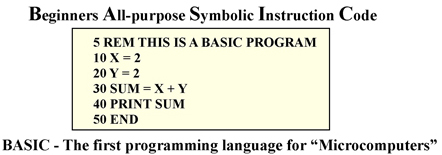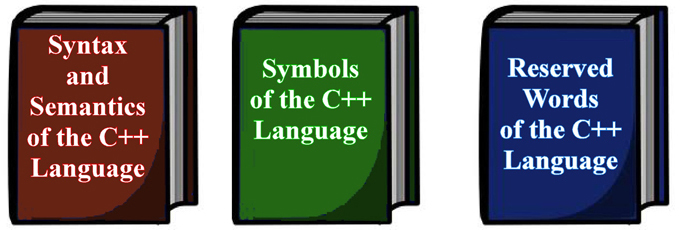Programming Languages
Programming has been defined as writing a list of instructions that tells the computer, in very precise terms,
how to do what you want it to do. But, what programming language will you use. There are many different
programming languages.
-
Binary
 In the beginning, this is how we "talked" to computers. It was called binary or machine
language and it was very difficult to work with. Machine language consists of just long sequences
of ones and zeros. In the end all programs must still be
translated into binary code as this is the only thing computers really understand. Fortunately
we have utilities to translate our programs into the binary language that the computer understands.
In the beginning, this is how we "talked" to computers. It was called binary or machine
language and it was very difficult to work with. Machine language consists of just long sequences
of ones and zeros. In the end all programs must still be
translated into binary code as this is the only thing computers really understand. Fortunately
we have utilities to translate our programs into the binary language that the computer understands.
-
Assembly Language
 This is a programming language that is a little more understandable but still requires that you
understand how the microprocessor, the heart of the computer, works.
Assembly language was a big step forward. In order for the computer to understand the assembly
language program however, it must be translated into binary code by a special program called an
Assembler.
This is a programming language that is a little more understandable but still requires that you
understand how the microprocessor, the heart of the computer, works.
Assembly language was a big step forward. In order for the computer to understand the assembly
language program however, it must be translated into binary code by a special program called an
Assembler.

-
High level languages
 It didn’t take long for someone to come up with the idea, "Wouldn’t it be nice to be able to
write a program in what looked more like a human language?" And from there things took off.
It didn’t take long for someone to come up with the idea, "Wouldn’t it be nice to be able to
write a program in what looked more like a human language?" And from there things took off.
 At last count there are approximately 150 different programming languages. Admittedly most are a
little weird and are only very rarely used.
At last count there are approximately 150 different programming languages. Admittedly most are a
little weird and are only very rarely used.
 As with assembly language, high level languages must also be translated into machine language by
a special utility program. In this case it is two utility programs, a compiler which
first translates the high level language code into what is called object code then in
a final step a Linker creates the executable binary code.
As with assembly language, high level languages must also be translated into machine language by
a special utility program. In this case it is two utility programs, a compiler which
first translates the high level language code into what is called object code then in
a final step a Linker creates the executable binary code.
Elements of a Programming Language
Any programming language consists of three things:
-
A set of Rules defining the syntax or grammar of the language, and
the semantics or meaning of commands in the language. If you violate any
of the syntax rules your program won’t compile. If you violate any of the semantics
rules your program may compile and run, but it won’t run correctly.
-
A set of Symbols defining certain operations, like the math operations of
addition, subtraction, etc.
-
A set of Special Words called reserved words that have a specifically
defined meaning in a command.













